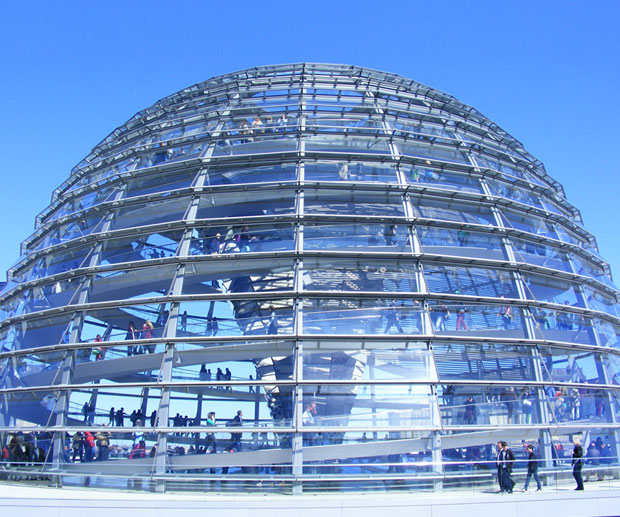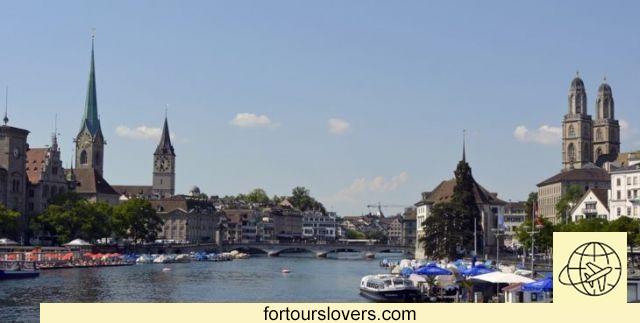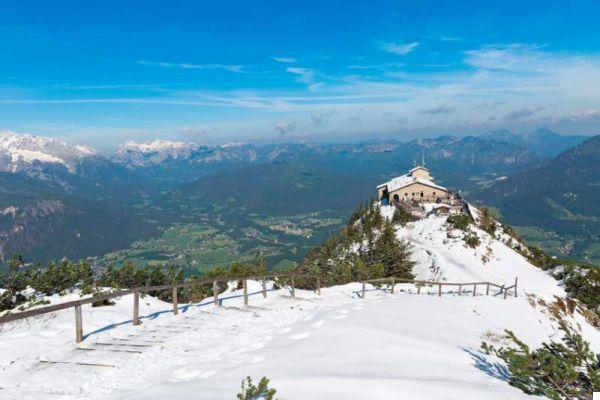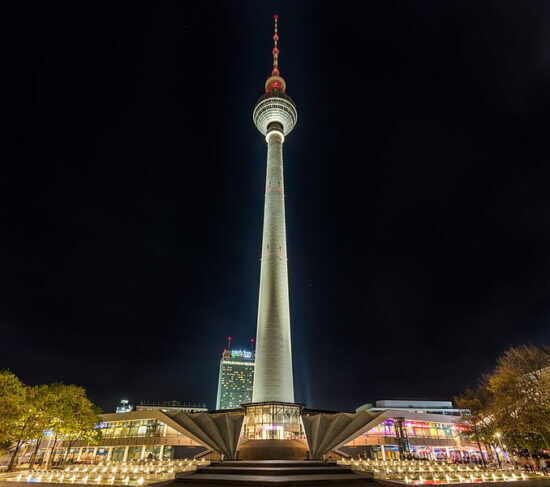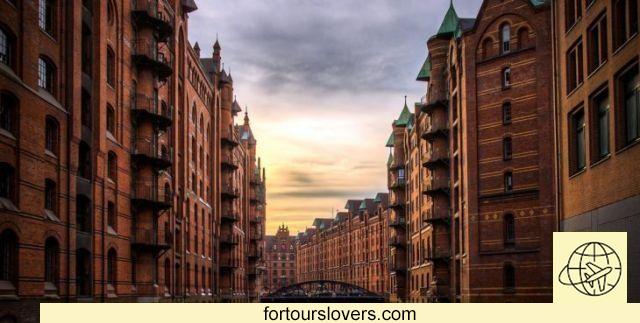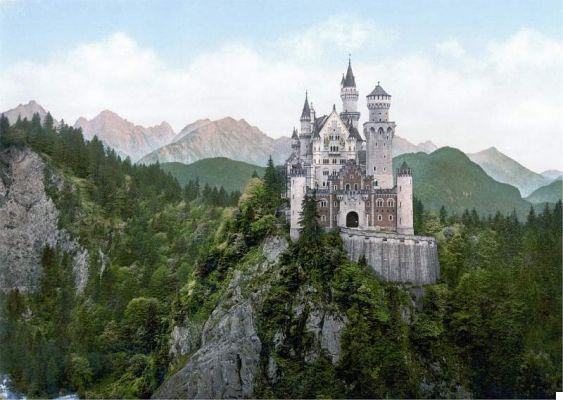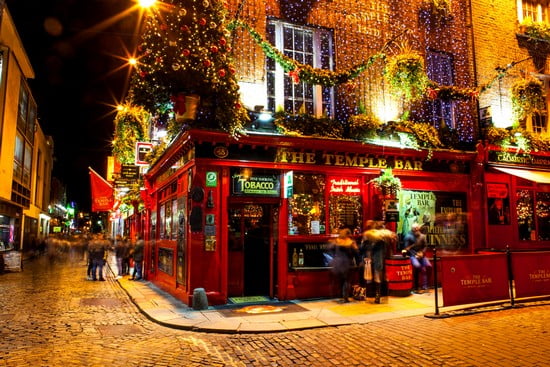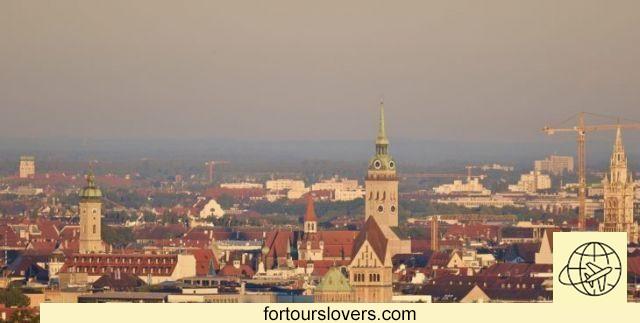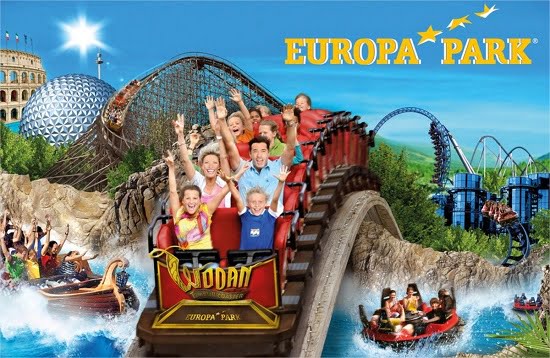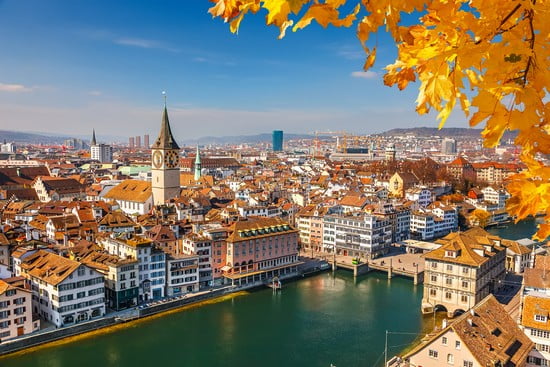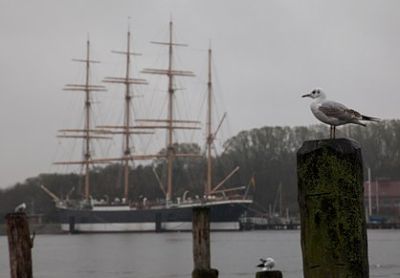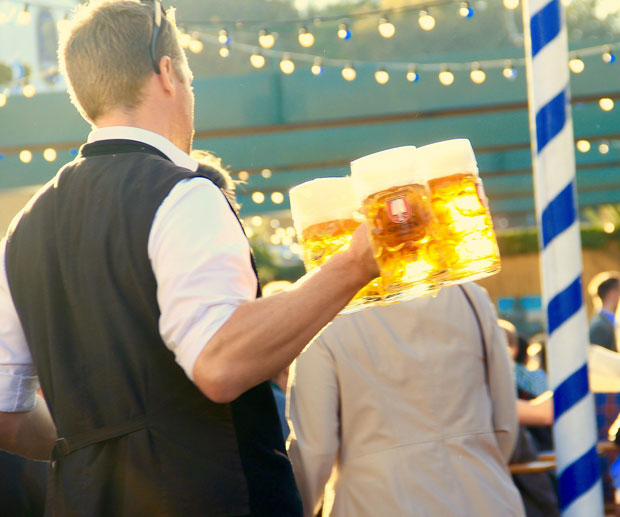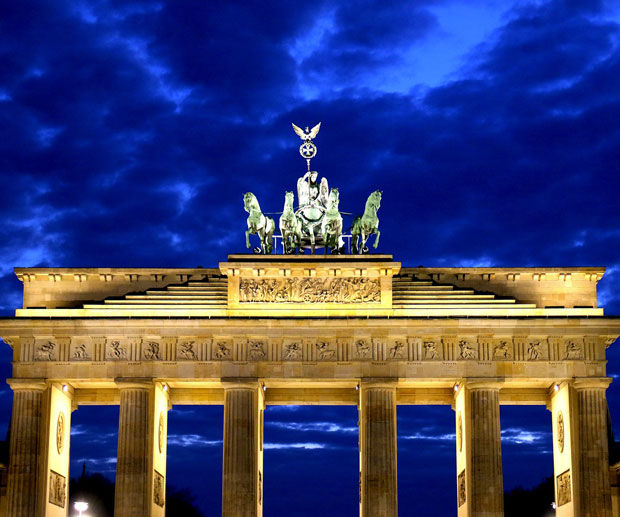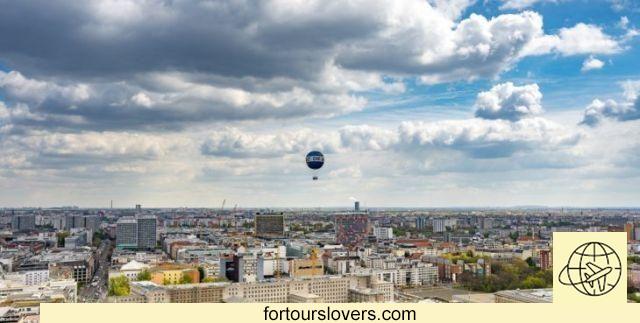
Berlin
13 things to do and see in Berlin and 4 not to doBerlin it's not easy to tell and it is not just a question of the risk of highlighting some points while neglecting others. To this aspect we must in fact add that it is one city in constant ferment. An artistic, cultural, creative ferment that not only affects uses and customs, but often and willingly changes the very structure of the city. In other words, the story of Berlin is constantly being reviewed even if, even if it is limited to the main tourist attractions, the result is a holiday that is unmatched in Europe and beyond. L'post-modern town planning it coexists perfectly with i monuments, the museums and the thousand other testimonies of great story of this city, which is therefore a must for anyone who wants to deepen their knowledge of both the present and the twentieth century. Below, we see together the best things to do in Berlin. Happy reading.
1 Mitte
At the beginning we mentioned the difficulty of describing Berlin. Let's take the Mitte: not only is it one of the districts in which the city is divided, but it is also one of the neighborhoods of the district of the same name (the other districts are: Moabit, Hansaviertel, Zoo, Wedding, Gesundbrunnen). And what a neighborhood, one might say. The Mitte, in fact, is the beating heart of Berlin, a must for any visit to the city, be it short or long. Discounted, therefore, to put it at the top of our list: from the TV Tower, to the Museum Island through the Unter den Linten boulevard, here are many of the city's main attractions. Before going to see them in detail, a advice: wandering around the Mitte is very pleasant, so visit everything there is to visit with the maximum relaxation possible.
2 TV Tower
In the 50s, the DDR, partly for logistical reasons, partly to magnify the fate of the socialist regime, erected in center of Alexanderplatz a gigantic one television tower for the dissemination of state programs. After the fall of the Wall and the reunification of East and West Berlin, "Telespargel" (transl. Teleasparagus), soon became a symbol of the city. There are two factors behind its popularity: on the one hand, the grandeur of the structure (365 meters), on the other hand the fact of being in a historically important square which has always been Alexanderplatz (so called in 1805 in honor of the Tsar of Russia Alexander I). Today the TV Tower is one of the main attractions of Berlin. TO 203 meters in height there is one platform (reachable with lift) which on clear days gives a magnificent sky line, not to mention the presence of an exclusive restaurant (“Sphere”) which rotates its axis every 30 minutes, completing a complete revolution on itself. It's not over, because to avoid long queues, the organization has seen fit to notify customers via sms. Of course, you need to have booked in advance, which is possible at place www. tv-turm.de (English version available). At the same address all information on opening / closing times and prices. Not to be missed!
3 Museum Island
There is an islet on the Spree River, on which in the XII century the first inhabited nucleus of Berlin. Today on this small strip of land some of the most important museums in the world are hosted next to each other. Not surprisingly, the place has been renamed "Museum Island" (Museuminsel) and it is another obligatory stop on a visit to the city. After all, there are hundreds of museums in Berlin and in the impossibility of visiting them all, at least in one go, it is necessary to make a selection. Discounted, therefore, starting with the best known: the Ancient Museum (Altes Museum) which houses sculptures and works of art from the Etruscan, Greek and Roman periods; the New Museum (Neues Museum) with a very rich collection of finds from the Egyptian age, including the famous Bust of Nefertiti; the Bode Museum (Bodemuseum) of which one cannot fail to admire the Byzantine art collection with artifacts ranging from the Middle Ages to the XNUMXth century; the Pergamon Museum, erected to house the Pergamon altar found in Turkey in 1878 by the engineer Carl Wilhelm Humann; and finally, but not in order of importance, the National Gallery (Alte Nationalgalerie). The latter represents the largest museum culture center in the whole of Germany, and was conceived in this way from the beginning, in 1876, its foundation year. The fall of the Wall provided the historical opportunity to bring together the collections conserved on both sides of the curtain, obviously without forgetting that enormous sacrifices had already been made during the Second World War in order not to waste a heritage of inestimable value. For more information visit the place: www.smb.museum (the English version is available).
4 Unter den Linden
"Unter den Linden": under the lime trees. This is the name of the main boulevard in Berlin, as well as one of the most famous in the world. A kilometer and a half of road, about 60 meters wide, surrounded on both sides by several rows of lime trees, whose planting dates back to the reign of Frederick William I of Prussia. The monarch needed the path from the Royal Palace to the hunting lodge in the Tiergargarten district to be as shaded as possible and so he ordered these trees to be planted. After Frederick William I, it was his son's turn Frederick II of Prussia provide for the embellishment of the avenue, ordering the construction of the National Opera Theater (Staatsoper) and National Library. In the XNUMXth century, the victory over France suggested the laying of several statues as a tribute to the courage of the generals of the Prussian army. On the road you will find several other buildings of great value: among others, the Hereditary Prince's Palace (Kroprinzepalais), L 'Armeria (Zeughaus, see next point) andHumboldt University famous for being frequented by Karl Marx. The Second World War, and the subsequent division of the city into two, led to a rapid decline of “Unter den Linden”. A decline averted with the reunification of the 90s which, albeit on new foundations, in a mix of conservation and innovation, has restored centrality to this beautiful avenue that ends (or begins) with the Brandenburg Gate (see point 6).
5 Museum of German History
Almost 30 years after the fall of the Wall, Berlin is a completely different city. So different that, while retaining many traces of that physical, political and psychological division, one runs the risk, without guidance, of losing the memory thread. That is, of failing to reconstruct the various passages of a fundamental event in German, European and world history. Therefore, the visit of the Deutsches Historiches Museum, inside the Armory building (Armory) mentioned earlier, is a must for those who are really interested in learning about the history of Berlin and Germany. The history relating to the forty years of 1949-1990, and the more specific one of the construction of the wall in 1961. It does not end here, because the museum also traces the stages of Nazi dictatorship and, backwards, those of World War I and German unification in the XNUMXth century. In short, this museum offers the visitor one overview of German history, without renouncing, however, to host temporary exhibitions. Exhibitions set up in the wing of the building designed bySino-American star Ieoh Ming Pei, which is also due to Pyramid of the Louvre in Paris. For more information visit the Official site: www.dhm.de (English version available).
6 Brandenburg Gate
Four key dates: June 12, 1987; November 9, 1989; December 22, 1989; October 3, 2002. Just over 5 years, it took so long from the famous speech (first date) Of Reagan who, right in Berlin, and right in front of the Brandenburg Gate, addressed the President of the USSR with these words: "Mr. Gorbachov, tear down this wall ”. Events, as we know, precipitated in November 1989 (second date) when hundreds of thousands of Berliners took to the streets after learning from radio and television that the DDR she intended to grant temporary travel permits to her fellow citizens. The socialist government was unable to manage the transition in an orderly fashion and so, in a completely spontaneous way, the city, divided for 40 years, was finally able to embrace again. A month after that historic event (third date) the Brandenburg Gate was reopened again. Also this time hundreds of thousands of Berliners gathered to celebrate the event but, precisely in that circumstance the monument, famous for the quadriga that surmounts it, it came out damaged. Hence, the need to restore it, postponing the official reopening of three years (fourth date). This, very briefly, is the ultimate history of a monument that has much more of "history". The structure dates back to 1791 and had already gone through very difficult moments before the two world wars: above all, the Franco-Prussian war, which ended with the defeat of the Napoleonic troops. In 1806, however, after the French entered the city, one of Napoleon's first acts was the seizure of the quadriga with the Goddess of Victory and its simultaneous transfer to Paris. A terrible affront, repaired eight years later with the return of sculpture to Berlin. These are the reasons, both recent and older, that explain the popularity of the Brandenburg Gate which, despite its name, never served as a city gate. Nevertheless the visit of the monument of Parisian Square it is a must on a visit to Berlin.
7 Holocaust Memorial
Il Memorial to the Murdered Jews of Europe (Holocaust Memorial) is located in the center of Berlin, between the Brandenburg Gate and Potsdamer Platz. Opened on 10 Maggio 2005 on project of theAmerican architect Peter Eisenmann, the monument stands on an area of over 19.000 square meters. where once there were the properties of Joseph Paul Goebbels, the terrible Third Reich Minister of Propaganda. The work consists of 2711 concrete stems of different heights and is accessible from any part of its perimeter. Walking among the stems, enraptured by the sinuosity of the monument, suggests bewilderment. The bewilderment evoked is that of reason, with the resulting loneliness both for the victims, helpless in the face of horror, and for the executioners mentally stuck in an ideology of death and destruction. There is obviously a information center where various testimonies of those who lived there between 1933 and 1945 have been collected and cataloged tragedy of the Shoah. For more information on timetables, visit methods and educational material consult the PDF in Spanish created by the center managers.
8 Reichstag building
There is an image, one of the most famous of the Second World War, which explains better than many words thehistorical and symbolic importance of the Reichstag building of Berlin. It is the image of Abdulkhakim Ismailov, soldier of the Dagestan that hoists the Soviet flag on the old palace of the German Empire. Central palace also in the Nazi rise, since it was following an arson in February 1933 that Hitler was able to request and obtain the abolition of most of the civil rights sanctioned by the Weimar Constitution. During the years of Cold War, Bundestag (the German federal parliament) was transferred to Bonn, except to meet once a year in West Berlin to underline the provisional nature of the solution adopted. In fact, immediately after the collapse of the wall, the Bundestag assembly returned to meet in the Reichstag. A renovated Reichstag to which a new one was added in the 90s glass dome it quickly became one of the main attractions of Berlin. A lift leads to the top of the dome from which you can see a magnificent view on the government district, on the Tiergarten park and the rest of the city. For more information on the times and methods of visiting the dome click here.
9 East Side Gallery
L'East Side Gallery, between Oberbaum bridge (Oberbaumbrucke) and station (Ostbanhof), is a must for those who want to deepen the contribution provided by street art to the story of German reunification. That art also has a historical dimension is undisputed, but even graffiti could contribute effectively to decode an event of this magnitude, well we learned it in Berlin. In the aftermath of the fall of the wall, on this only part left, more than 100 artists from all over the world ventured to tell the difficult and exciting transition towards German reunification. Among the many graffiti, the most famous is undoubtedly the “Fraternal kiss” between Leonid Brezhnev and Erich Honecker. The work, by the Russian artist Dmitri Vrubel, reproduces a shot from 1979, in which the two heads of state of the USSR and the GDR were actually kissing with pursed lips. A rite borrowed from the Orthodox tradition that served to reaffirm the socialist brotherhood of the two nations. In the mural, however, under the painted icon, there is the inscription in German "God help me to survive this deadly love story". Vrubel's caption clarifies better than many essays the spirit, the endurance, sometimes the resignation with which millions of human beings lived the communist season beyond the iron curtain. For more information about the gallery, works and artists visit the place: www.eastsidegallery-berlin.de (English version available).
10 Sony Center
One of the unmissable stops in Berlin is undoubtedly Potsdamer Platz, which has always been one of the main squares of the city. Or rather, one of the main squares of the city until the bombing of the Second World War first, and the construction of the wall later, transformed it into a sadly desolate place. It is therefore normal that the reconstruction of the 90s concerned in depth this area where some of the greatest architects in the world could try their hand. From 1993 to 2000, dozens of buildings, streets and new squares were built all around Potzdamer. The most spectacular building of all is the Sony Center a complex of 7 buildings surmounted by a huge umbrella-shaped steel roof whose peculiarity is that of changing color during the day. The real estate complex, as the name suggests, was built by the multinational Sony which sold it in 2008, however keeping its headquarters here. From a tourist point of view the area is made up mostly of shops, bars and restaurants. Therefore, much of its charm derives from the merciless confrontation with what was there before. Do not miss the Panoramapunkt, the fastest elevator in the world. It is located inside the Kollhoff Tower, one of the new buildings mentioned earlier (named after the architect Hans Kollhoff) and in 20 seconds it runs 100 meters leading tourists on a panoramic terrace with one of the most beautiful views of Berlin. For more information visit the place: www.panoramapunkt.de (English version available).
11 Checkpoint Charlie
In the aftermath of the construction of the Berlin Wall in 1961, the then President of the United States of America John F. Kennedy ordered the construction of three checkpoints (Checkpoint Alpha, Bravo e Charlie the names of these border crossings) in different parts of the city to allow the crossing from west to east (and vice versa) of foreign travelers and diplomatic personnel. The greater popularity of Checkpoint Charlie is probably due to the simultaneous birth, nearby, of a small museum whose founder Rainer Hildebrandt it set itself the goal of collecting as much evidence as possible of that sudden family and territorial segregation, even before being political. There Checkpoint Charlie House (MauerMuseum) is today the real attraction, since the cabin where once the bureaucratic processing necessary to allow the crossing from one part of the city to the other took place has been Allied Museum (AlliiertenMuseum). In its place there is a reproduction, while in the House at Checkpoint Charlie there are numerous finds attesting not only the political division of the two Germanys but also the ingenious escape attempts devised over the years by the citizens of the East. For more information visit the place: www.mauermuseum.de (English version available).
12 Jewish Museum
The idea of building a Jewish Museum in Berlin it precedes the fall of the Wall. If we waited until 2001, it is because it was necessary to first face two aspects: the first had to do with the cut to be given to the exhibition; the second, perhaps more important, concerned the ownership of the museum itself. At first, the government solution was advocated, but then the different formula of the independent foundation under the supervision of the federal government. As for the contents, the museum illustrates the beyond 2000 years of Jewish culture in Europe with contributions ranging from art, literature to religion. Great space, of course, is dedicated to persecution which the Jewish people have been subjected to. Persecutions in Europe ranging from the early Middle Ages to the tragic story ofNazi Holocaust. But what is most striking about the Jewish Museum in Berlin is his innovativeness. Multimedia techniques, lighting effects, exhibition rooms with bizarre shapes: everything is designed to offer a spectacular vision to the visitor without ever giving up the popular function of the museum. Finally a curiosity: the inauguration of the Jewish Museum in Berlin was initially scheduled for 11 September 2001. On that same day, however, there was the attack on the Twin Towers in New York and it was therefore necessary to postpone the inauguration by two days. For more information visit the Official site: www.jmberlin.de (English version available).
13 Zoo
Last but not least it Zoologischer Garten of Berlin. The oldest zoo in Europe (inaugurated in 1844), as well as one of the best equipped in the world, capable of hosting about 14.000 specimens of 1.400 different species. Hippos, monkeys, rhinos, pandas, penguins, lions, panthers, giaguri and butterflies: one impressive wildlife variety bred constantly taking into account both psycho-physical well-being of animals that of the needs of visitor safety. Visitors are hundreds of thousands every year, confirming the fame of an activity that has over 160 years of history. Do not miss theAquarium, which was built near the zoo but can also be visited separately. Here too a great variety: crocodiles, caimans, turtles, snakes, ocean fish, sharks and much more. For more information on timetables, prices, public transport and how to visit, consult the Official site: www.zoo-berlin.de (the English version of which is available).
1 Do not violate the rules of civil coexistence
What has already been said for Munich, Vienna, Stockholm and Copenhagen applies to Berlin. Cross in red, walk on the cycle paths, take the left hand side on the escalators, use public transport without a ticket they are not “simple” more or less tolerated infractions. On the contrary, they are behaviors sanctioned twice: first of all by the Berliners (the risk of getting hurt by walking on the cycle paths is not marginal) and then by the authorities in charge of controls, tempted to impose fines by a rewarding system of incentives that greatly boosts the base salary. Warn!
2 Beware of pickpockets
Berlin is one great metropolis and as in all large cities it can happen to be targeted by some malicious person, especially in particularly crowded places. The precautions to avoid nasty surprises are the same as always: watch where you put your wallet; do not leave the bag open and / or unattended; do not show off high value objects (at least in some contexts). Having said that, no fear, these are simple precautions and nothing more, to which we must add great efficiency of the police force to garrison the city.
3 Don't eat Italian
Berlin is an international city. A cosmopolitan metropolis where you eat everything and well. This also applies to Italian cuisine. There are level Italian restaurants that won't make you feel homesick. There are others, however, that are absolutely not up to it. Therefore, unless you have the right tip, the advice is to desist: pizza, spaghetti, tagliolini and the thousands of other goodies of our kitchen can wait. Better shop around and focus on other gastronomic realities, obviously starting with the home one.
4 Don't talk lightly about the past
Nazism, the holocaust, the wall, communism are not distant pages of history. They are memories and sufferings alive in the memory of millions of Berliners. It's true, the city has changed a lot in the last twenty years, but one of the prerequisites for the change was precisely there non-removal of the wounds of the past. Past that we must talk about, with which we must confront, all aspects of which must be explored, as long as it is done with the right measure. It is therefore forbidden to speak lightly of Hitler, of East Germany etc.; worse still to think of re-proposing gestures and symbols of that season in a goliardic way. In conclusion, serietà e measure are the keyword with which to approach tormented '900 in Berlin.





